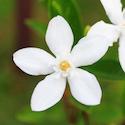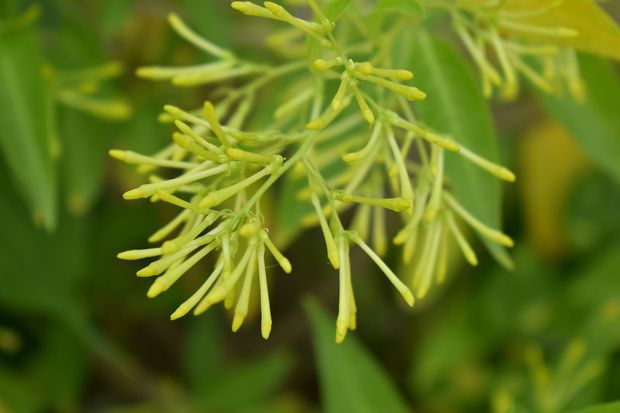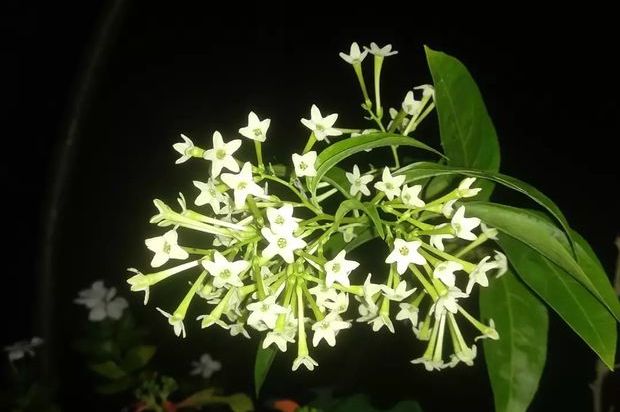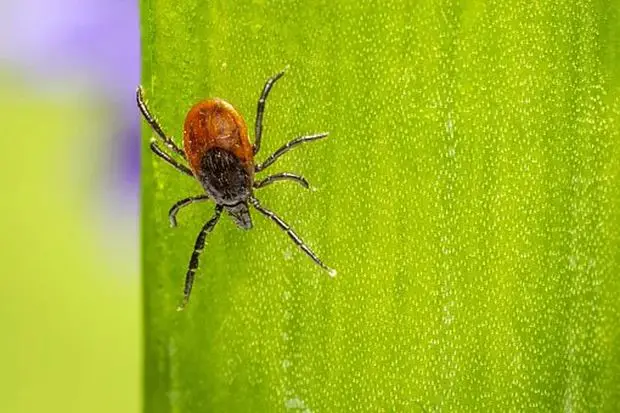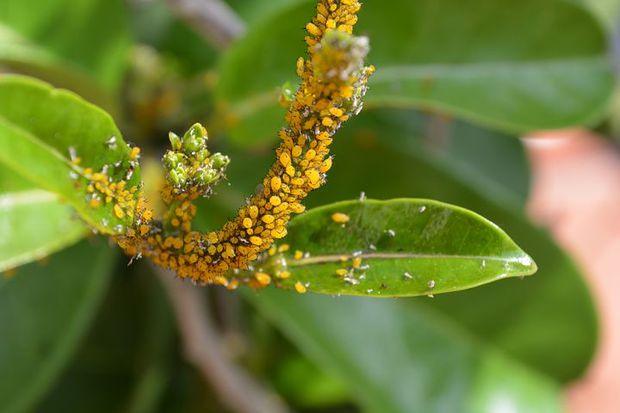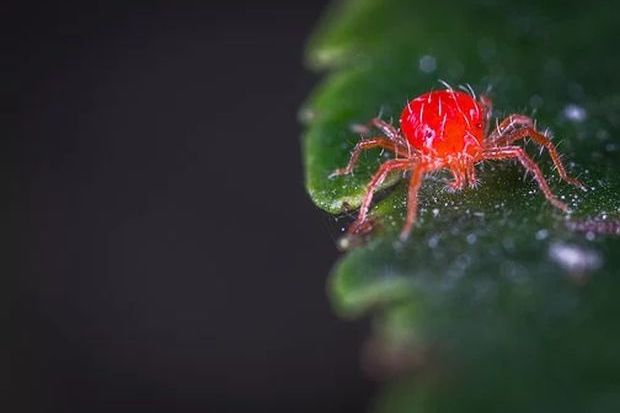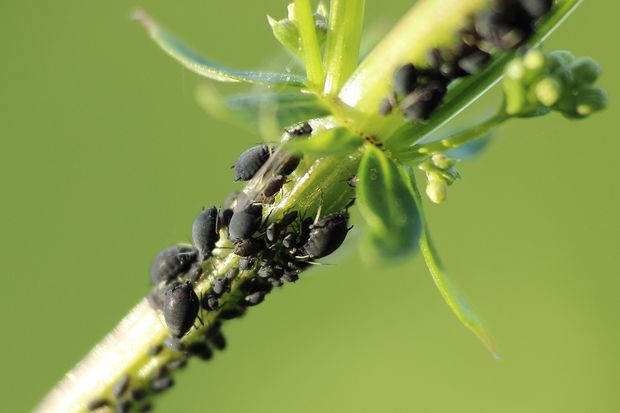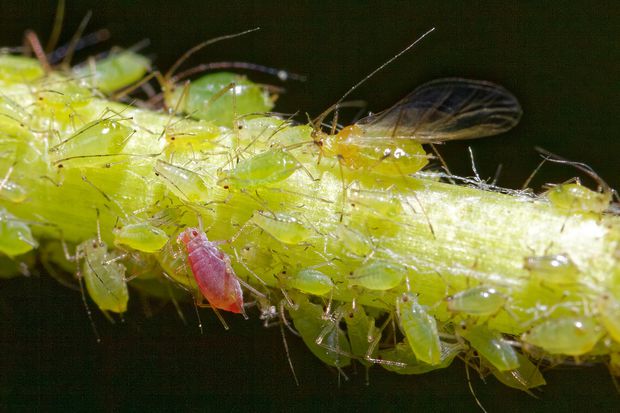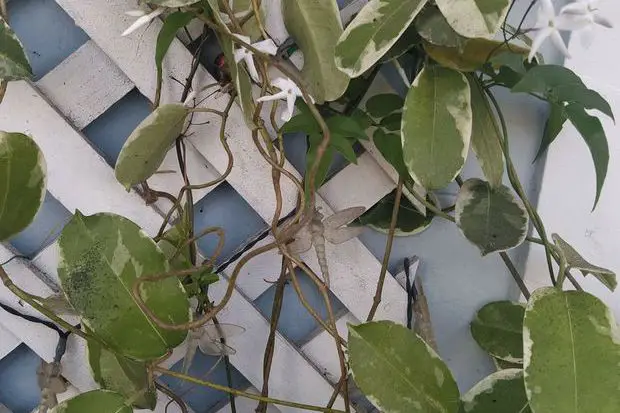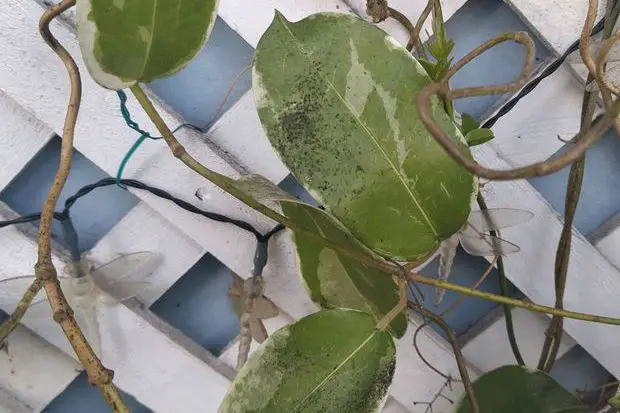Cestrum nocturnum, which is most commonly known as night-blooming jasmine, is an exquisite jasmine plant variety, belonging to the Solanaceae family (the nightshades). It is endemic to the subtropical regions of West India and is now growing in temperate regions around the world where the average temperature is warm and the winter temperature does not go much below 54 °F (that's 12 °C). The night-blooming jasmine plant is a unique jasmine variety, with yellow and/or white flowers. It produces a superb and exquisite scent when the flowers open up at night. During the day, the flowers are closed and they only open up at night, releasing the sweet scent, hence the name night-blooming. Its enchanting scent is well known as one of the strongest in the world.
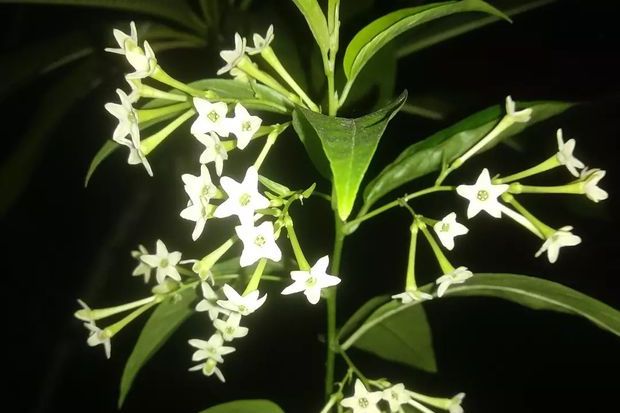
Sometimes, you might unfortunately notice that your beautiful night-blooming jasmine's leaves and flower buds are dropping off. The foliage appears to be quite damaged and those silky flowers look pretty lifeless and are without much of the usual scent. You may even notice that there are bite marks and some gooey or sticky deposits around the leaves, stems and elsewhere throughout the plant.
Odds are, that your night-blooming plant has a pest problem and this pest (whatever that one would be), is affecting the chances of your plant to thrive and produce those beautiful flowers.
How do you get rid of bugs on night-blooming jasmine?
It is important to know that there are largely tree types of night-blooming jasmine plant pests to consider: Mites, insects and fungi.
Mites
Let's start with mites, small arachnid creatures, many of which are parasites.
The two-spotted mite
Two-spotted mites Tetranychus urticae are also more commonly known as spider mites. They are one of the most common pests of the night blooming jasmine plant. Two-spotted mites are very small and hardly visible arthropods. They belong to the Acari subclass, of the higher level Arachnid class, which means they are related to the spiders, hence their name: Spider mites.
These mites will appear in the form of tiny spots on leaves and stems and some of them have two dark spots on their abdomen. They're only about 0.016 inch (0.4 mm) long.
When your outdoors night-bloom jasmine plant is infected with these mites, the infection can be hard to get rid of, because the mires can be pretty resilient to the winter. Females can resist really low temperatures and propagate the next generation. Likewise, if these mites infest an indoors night-bloom plant, they will continue to feed and survive easily through the winter. However at a much slower rate if the temperatures go below 55 °F (13 °C) in which case they can die.
Essentially, the mites feed on the dorsal side of the leaves, removing all the leaf cell contents and most importantly decreasing its chlorophyll. For that reason, heavily infested leaves can turn pretty much white before they will dry up, drop off. Eventually, a big infestation of these spider mites could even kill your plant.
These mites love hot and semi dry conditions. They will travel around the plant through thin silken webs that they are able to produce.
How do we get rid of these mite bugs in our night-bloom jasmine?
- Proper growing conditions
- Before anything, we need proper growing conditions. This way, we guarantee optimal health for our plant. This includes, appropriate watering and fertilization techniques when the climatic conditions are very hot and dry.
- Physical removal
- We have to get rid of the mites as soon as possible. Physical removal of the mite with a forceful stream of water for instance using a hose works well: You can simply wash away those pesky mites and their webs.
- Chemical removal
- After physical removal, we want to move one step further to chemical removals, using insecticidal soaps and horticultural oils. These are next in line of treatment and to be sprayed all over the foliage (especially in the dorsal side of the leaves) to cure the spider mite issue. With this, we diminish what's left of the mites after the physical removal.
If after these steps, the problem still persists, you could try synthetic chemicals with residual activity but bear in mind that most of common insecticides will not kill the spider mites as they have developed resistance to these kind of products. So make sure you get a specialized miticide, which could also be called acaricide, instead.
What are these products in detail and how do they work?
Insecticidal soaps
Insecticidal soaps are natural derived chemicals made from potassium salts of fatty acids. They are made by mixing an alkaline compound with some fatty acids. These fatty acids come from all kinds of natural oils, such as castor oil, coconut oil, and olive oil. The mode of action of insecticidal soaps is killing the mites by suffocation and/or disrupting their cellular membranes, resulting in dehydration.
Horticultural oil
Horticultural oils are pesticides like products made from highly refined petroleum and vegetable oils that are filtered and distilled to treat plants from mites and other harmful pests.
Residual pesticides
Long-lasting insecticides, such as bifenthrin and permethrin are really effective in treating two spotted spider mites infestations. However, we have to be cautious as these products do have a long lasting residual activity, also affecting "the good and useful insects" and can make these infestations worse over the long term, by destroying the natural balance. It is best to use them sparingly and only when other methods proof unsuccessful.
Insects
Insects are the second most important pest after mites. Several classes of insects are the perfect enemy for our beautiful night-bloom jasmine plant (and most of the other jasmine plants too). The most common insect pests of our jasmine plants are: Plant lice (aphids) and caterpillars.
Plant lice (aphids)
Aphids are insects commonly known as plant lice. They look a little bit like little green worms crawling all over your jasmine plant. They can feature wings or not, and although the most common color is green for camouflage, sometimes they also feature orange and blue bodies.
Aphids are a common pests of jasmine plants and they are literally sucking bugs that love to feed on the sap of the plant. Aphids are particularly problematic in our night blooming jasmine because they are damaging in a "two per one" fashion. First, aphids will physically damage the plant by sucking on vital fluids of the plant and transmitting back some toxins that will cause further damage. Not only that, but to make things worse, they also will excrete a sugary substance called honeydew. This honeydew will then promote the growth of a secondary infection by another pest called sooty mold fungus.
For aphids, prevention is key. Proper care goes a long way to avoid fighting off aphids, which is harder on an overlooked and/or stressed plant. These plants are much more at risk. Remember to maintain your night-blooming jasmine in locations where there is direct sun exposure for a couple of hours with some partial shade during the rest of the day and make sure your plant has the proper moisture and well drained soil as well as optimal fertilization conditions.
If you are battling an aphid infestation, proceed by removing the parts of the plant that are affected by the aphids to help decreasing the spread of the aphids themselves and the fungal infection.
Then, start applying some neem oil or insecticidal soap by throughly spraying the entire plant, especially the underside of the leaves, which is where the aphids will be thriving on our jasmine plant. In the cases where the infestation is huge, we need a more invasive approach and that will be to use residual pesticides containing permethrin or malathion. We will again make sure the entire plant is well sprayed with this agent.
Caterpillars
Caterpillars are the second most common insect pest of our night blooming jasmine. Caterpillars mainly feed on the leaves and they are super avid eaters, able to really destroy our plant in no time. They can even crawl up to the blossoms, munching on them inflicting physical damage and as a results most of the blossoms will drop off before it can flourish. In order to protect our jasmine plant from caterpillars, our best option is to go for organic pesticides rather than long lasting residue ones because really it isn’t required and we don’t want to add unnecessary contaminants to our plants, the environment or the operator.
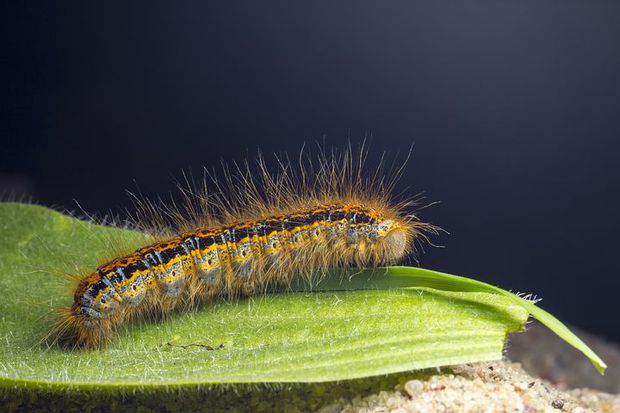
Home made and commercial insect busters
Here, we have listed the best insect busting products and home remedies for your jasmines, to help you fight off an aphid or caterpillar infestation:
- BT products
- BT products are based on Bacillus thuringiensis, which is an organic caterpillar killer. Essentially, these products work by blocking the caterpillar digestion, and it is recommendable to use them as soon as the first larvae/butterflies appear. It is best applied through spray during the drier season around three times a week. I mention it first, because it has worked best in my hands.
- Horticultural oils
- As stated above in this post, neem oils is a ‘go to’ oil to help reducing some jasmine pests. It will will suffocate caterpillars too and they will die and fall of the the plant. Neem oil is best applied both topside and bottom side of the leaves during the evenings where the sun exposure is less strong. That way, it can work over night. We do this to avoid killing bees, as by dusk most of them will have returned to their hive, and also the oil drops will perform the effect of a lens and they can burn the leaves in the strong sun hours. And that is something we would like to very much avoid.
- Other natural remedies
- Other natural options are fermented green tea and garlic decoction mixtures.
- Decoy crops
- Essentially, decoy crops are crops nearby your jasmine plant, that can be sacrificed to trick those caterpillars to go to those decoy crops instead of our jasmine plant. Usually, passion flower, hollyhock ,nasturtium, shrubs like dill and fennel, are the preferred decoy crops to be used as caterpillars go crazy for. If caterpillars show up, they go for these first before your precious jasmines. Just keep an eye out for them and remove them with the other methods, if they start appearing.
- Decoy objects
- Decoy objects involve tricking moths, caterpillars and butterflies into laying their eggs somewhere else. Basically, it consists on putting some drawings or upside down eggshells that resemble the female partner of the moth or caterpillar near the plants to trick them to go there instead of coming to our jasmine plants.
- Crop rotation
- A good crop rotation practice helps in for fresh pupae to hatch from their cocoons and these new insects are unable to easily find new host plants to fully develop and thrive on. Additionally, practicing good crop rotation techniques helps growing healthier jasmine plants and therefore they will grow more resistant to caterpillars or other pests such as budworms, giant whitefly, mealybugs, leaf webworm (Nausinoe geometralis), gallery worm (Elasmopalpus jasminophagus) and leaf roller (Glyphodes unionalis).
Fungi
Fungi are the last major class of pests that are affecting our jasmines. Common fungi infections include sooty mold, leaf spot, leaf rust and phytophthora.Sooty mold
As we have discussed earlier, this mold grows as a consequence of aphids transferring their sugars into the plant when they munch away depositing sugary honeydew. As a result of this honeydew covering the plant, a secondary infection of fungi will grow, called sooty mold. When this fungi grows on the surfaces of the plant, it will inhibit the absorption of the light, making the blossoms of the plants go pale and eventually drop. It will also deform the plant absorbing all its energy and eventually the plant will grow malformations called galls.
This sort of fungus infection of our jasmine plants, can be fixed by washing it off the plants with a lot of water. Remember to do this every time you have an aphid infestation.
Leaf Spot
Our night blooming jasmine plant is very sensitive to leaf spot pest. In this case, you will notice some circular spots on the leaves, which will cause a leaf deformation and subsequent leaf drop of infected plant leaves.
Leaf spot fungi infection absolutely thrives in wet, humid and cool weather at the beginning of the growing season. It is quite rare for leaf spot fungi to appear when the weather becomes warmer, hence prevention is key when protecting your jasmine plant from this pest. Simply apply a fungicide as a spray around the plant when the leaf buds first appear. Do this every week or two.
Because when the circular spots are really noticeable, it is oftentimes too late to be treated chemically and the fate of the plant is questionable. You can still apply fungicides after the fact and fight for your plant, of course.
Leaf rust
This fungus pest will generate a powdery residue of a yellow to brown color and is usually deposited on the underside of the leaves of our night blooming jasmine plant. The infection will disrupt the leaves and can promote defoliation and stem damage.
Again, in this case, the best way to protect the night blooming jasmine plant, is prevention. Because again, chemical treatment will not do much when the infection has been well established. If you start noticing this, remove the affected leaves and stems and pick up any fallen debris and move it away from our plant.
To that end, water early in the mornings, avoiding the peaks of the day and give time to your jasmine plants to dry out during the day. Using soaker hoses on the ground for watering are really helpful to keep the leaves dry. You can use a slow-release, organic fertilizer which is high in nitrogen on our night blooming jasmine. This will boost the leafs and helps the most susceptible plant.
You can also spray out the plant with anti-fungal copper sprays or sulfur powders to prevent infection early in the year.
If you encounter well established leaf rust or leaf spot fungal disease, which is spread out, use broad spectrum fungicides rich in sulfur and pyrethrins to help treating the problem and avoid our jasmine plant to die.
Phytophthora
This fungus pest is involved in seriously damaging the roots of our night jasmine plant. You will notice that the foliages starts getting discolored and flaky, eventually the leaves will start dropping and if left untreated, it can have a fatal outcome.
The main cause of this fungi to appear is conditions around the roots which are too wet due to over irrigation and over watering of the plant making the soil too wet, or a lack of water drainage. Prevent that by keeping the plant bedding moist but avoid standing water. Do not drown your jasmines.
You can protect your night blooming jasmine plant when this happens, if the problem is small and only at a surface level, by simply constructing a drainage ditch or an underground drainage system. French drainages are also a really good option here. Essentially that is the same sort of drainage solution but filled up with gravel down low, on top of which the plant soil is resting on.
There you go! Now we know all the tips and signs to look for when trying to keep our night blooming jasmine plant flourished and vibrant and free from all sorts of pests!
